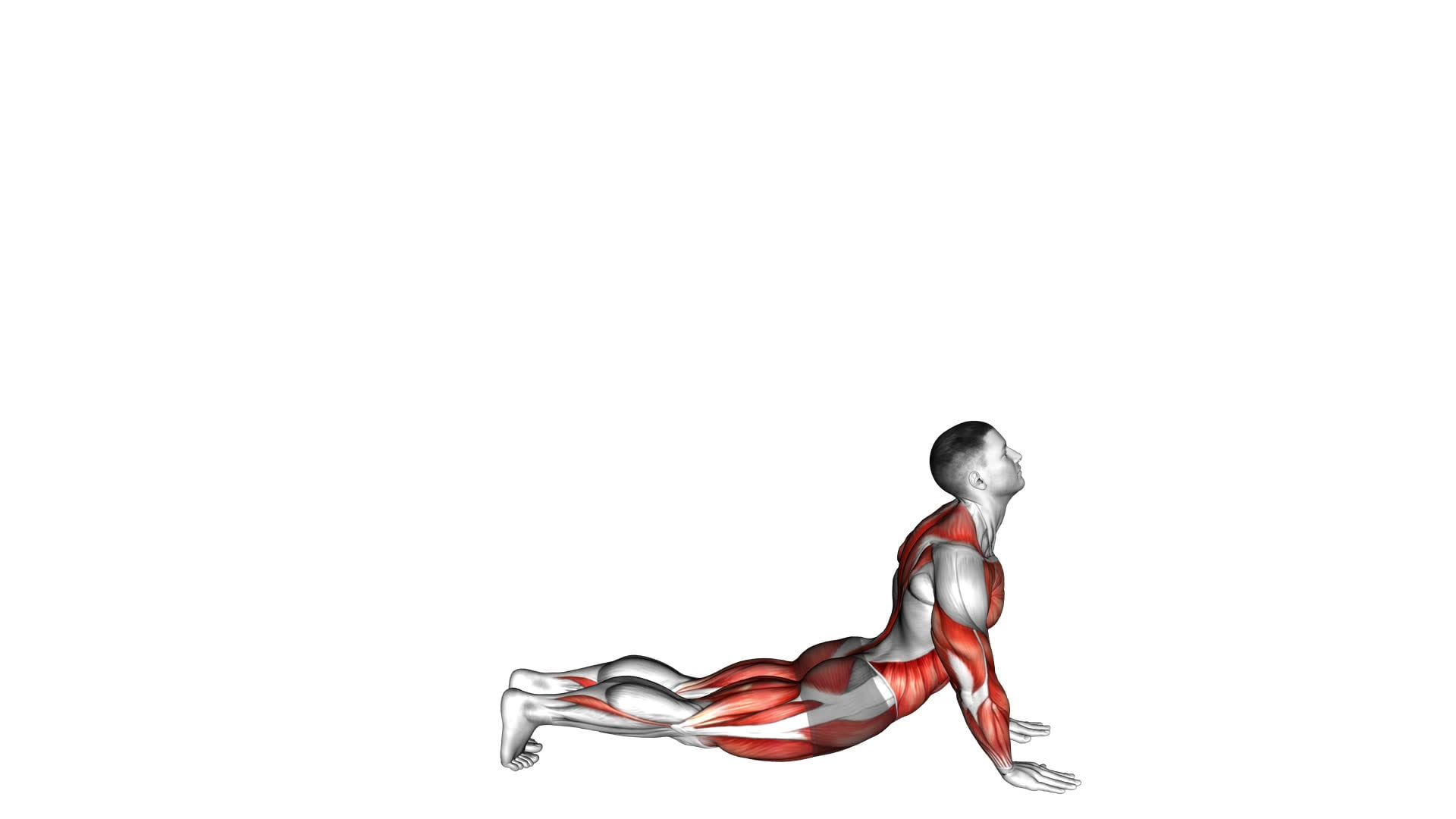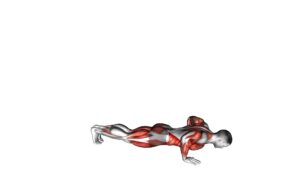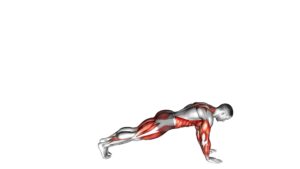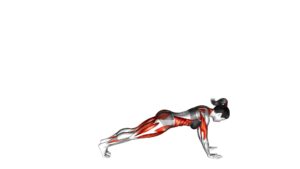Inchworm to Cobra (male) – Video Exercise Guide & Tips

Looking to strengthen your core and increase flexibility? Check out our video exercise guide on the Inchworm to Cobra (male) exercise!
Watch This Exercise Video
This dynamic movement targets your abs, back, and shoulders, helping you build a stronger, more resilient body. In just a few minutes a day, you can improve your posture and overall fitness level.
Get started today and discover the benefits of this effective exercise.
Key Takeaways
- Inchworm to Cobra targets the abs, back, and shoulders.
- Proper form and technique are important for maximum benefit and to avoid strain on the lower back.
- Increasing intensity and difficulty can be achieved by adding push-ups or jumps.
- Modifications and variations make the exercise accessible for all fitness levels.
Benefits of the Inchworm to Cobra Exercise
Experience enhanced flexibility and core strength with the Inchworm to Cobra exercise. This exercise is highly beneficial for injury prevention and core strengthening.
By performing the Inchworm to Cobra regularly, you can improve your overall flexibility, especially in your hamstrings and lower back. This exercise involves starting in a standing position, slowly rolling down to a plank position, and then arching your back into a cobra pose. This movement helps to stretch and strengthen the muscles in your core, including your abdominals, obliques, and lower back.
The Inchworm to Cobra exercise also helps to improve your posture by strengthening the muscles that support your spine. This can help alleviate back pain and reduce the risk of future injuries. Additionally, by engaging your core throughout the exercise, you're developing stability and balance, which can be beneficial for various physical activities and sports.
To get the most out of this exercise, focus on maintaining proper form and control throughout each movement. Engage your core muscles and keep your back straight during the plank and cobra poses. Start with a few repetitions and gradually increase the number as you become more comfortable and stronger.
Incorporating the Inchworm to Cobra exercise into your regular workout routine can greatly improve your core strength and flexibility, while also reducing the risk of injury.
Proper Form and Technique for Inchworm to Cobra (male)
To perform the Inchworm to Cobra exercise with proper form and technique, follow these steps:
- Start in a standing position with your feet hip-width apart.
- Slowly bend forward from your hips, keeping your legs straight, until your hands touch the floor in front of you.
- Walk your hands forward, keeping your core engaged and your back straight, until you're in a high plank position.
- Lower your body to the ground by bending your elbows and keeping them close to your sides.
- Push your upper body up, extending your arms and arching your back to come into the cobra pose.
- Hold the cobra pose for a few seconds, focusing on squeezing your glutes and activating your back muscles.
- Slowly lower your body back down to the ground and push yourself back up into the high plank position.
- Walk your hands back towards your feet, keeping your legs straight, until you're in the starting standing position.
Proper form and technique are crucial to prevent injury and activate the right muscles during the Inchworm to Cobra exercise. Engage your core throughout the movement to protect your lower back and maintain stability. Focus on activating your back muscles during the cobra pose to improve posture and strengthen your upper body. Remember to breathe and listen to your body's limits, only going as far as you feel comfortable.
Tips for Increasing Intensity and Difficulty
To increase the intensity and difficulty of the Inchworm to Cobra exercise, you can incorporate variations and progression exercises. These methods won't only challenge your muscles but also increase endurance.
One way to intensify the Inchworm to Cobra exercise is by adding a push-up at the end of each repetition. After you reach the cobra position, lower your body towards the ground, bending your elbows to perform a push-up. This modification engages the chest, shoulders, and triceps, making the exercise more demanding on your upper body.
Another variation to increase the difficulty is by incorporating a jump at the end of each repetition. Instead of returning to the starting position slowly, explosively jump your feet forward towards your hands and then jump up into the air, extending your arms overhead. This modification not only targets your upper body and core but also adds an element of cardiovascular training as you increase your heart rate with the explosive jumps.
Modifications and Variations for All Fitness Levels
You can modify and vary the Inchworm to Cobra exercise to suit your fitness level. Here are some modifications for beginners and advanced variations to challenge yourself:
- Modifications for beginners:
- Start with smaller steps during the inchworm movement to decrease the distance between your hands and feet.
- Perform the cobra pose with your knees on the ground instead of fully extending your legs.
- Take breaks between repetitions if needed, gradually increasing the number of sets as you build strength and endurance.
- Use a yoga block or a folded towel under your chest for added support during the cobra pose.
- Advanced variations:
- Increase the distance you walk during the inchworm movement, challenging your core and upper body strength.
- Extend your legs fully in the cobra pose, lifting your chest and legs off the ground simultaneously for a more intense backbend.
- Add a push-up after each inchworm step to engage your chest and arms even further.
- Incorporate a side plank on each side after the cobra pose to target your obliques and improve balance.
Common Mistakes to Avoid While Performing Inchworm to Cobra
To perform the Inchworm to Cobra exercise correctly and avoid common mistakes, you should always maintain proper form and practice it regularly. One common mistake is rushing through the movement without focusing on proper technique. It's important to take your time and perform each step with control and precision.
Another mistake to avoid is lifting your hips too high during the inchworm portion of the exercise. This can put strain on your lower back and reduce the effectiveness of the exercise. Instead, keep your hips in line with your shoulders to maintain proper alignment.
Additionally, be mindful of your core engagement throughout the entire movement. Neglecting to activate your core can lead to a loss of stability and increase the risk of injury.
Lastly, avoid collapsing your chest and shoulders when transitioning from the inchworm to cobra position. Keep your chest open and your shoulders pulled back to maintain a strong and stable upper body position.
Frequently Asked Questions
How Many Sets and Reps Should I Do for the Inchworm to Cobra Exercise?
To modify the inchworm to cobra exercise for beginners, start by doing fewer sets and reps. Gradually increase as you become more comfortable and confident.
For improving flexibility, focus on stretching your hamstrings and lower back before attempting the exercise. Remember to engage your core and keep a straight line from your hands to your feet.
With practice, you'll build strength and flexibility in your upper body and core.
Can I Do the Inchworm to Cobra Exercise if I Have Lower Back Pain?
If you're experiencing lower back pain, it may be best to modify or avoid the inchworm to cobra exercise.
To modify, try doing a gentle cat-camel stretch instead, which helps to stretch and strengthen the back without putting too much pressure on it.
Another alternative is the plank exercise, which engages the core and stabilizes the back.
Always listen to your body and consult with a healthcare professional for personalized advice.
Is It Necessary to Warm up Before Performing the Inchworm to Cobra Exercise?
Before performing the inchworm to cobra exercise, it's highly recommended to warm up. Warming up helps prepare your muscles and joints for the workout and reduces the risk of injury. It increases blood flow and flexibility, making your body more ready for physical activity.
If you're a beginner, you can modify this exercise by bending your knees slightly or performing it on an elevated surface. Always listen to your body and start with modifications if needed.
Can I Do the Inchworm to Cobra Exercise if I Have Limited Upper Body Strength?
If you have limited upper body strength, there are modifications and alternatives you can try for the inchworm to cobra exercise.
Instead of starting in a high plank position, you can begin on your knees and focus on engaging your core as you walk your hands forward.
Another option is to perform a modified push-up instead of going into a full cobra pose.
These adjustments will help you build strength gradually while still benefiting from the exercise.
How Long Does It Take to See Results From Doing the Inchworm to Cobra Exercise Regularly?
To see results from regularly doing the inchworm to cobra exercise, it will depend on various factors such as your current fitness level, consistency, and intensity of your workouts.
Typically, you can expect to start noticing improvements in strength, flexibility, and posture within a few weeks of consistent practice.
As you progress, you can also incorporate advanced variations of the inchworm to cobra exercise to challenge yourself further and continue seeing results.
Conclusion
In conclusion, the inchworm to cobra exercise is a beneficial full-body exercise that targets multiple muscle groups. By maintaining proper form and technique, you can increase the intensity and difficulty of this exercise.
Additionally, there are modifications and variations available for individuals of all fitness levels. It's important to avoid common mistakes to ensure maximum effectiveness and prevent injury.
Incorporating the inchworm to cobra exercise into your workout routine can help improve strength, flexibility, and overall fitness.

Author
Years ago, the spark of my life’s passion ignited in my mind the moment I stepped into the local gym for the first time. The inaugural bead of perspiration, the initial endeavor, the very first surge of endorphins, and a sense of pride that washed over me post-workout marked the beginning of my deep-seated interest in strength sports, fitness, and sports nutrition. This very curiosity blossomed rapidly into a profound fascination, propelling me to earn a Master’s degree in Physical Education from the Academy of Physical Education in Krakow, followed by a Sports Manager diploma from the Jagiellonian University. My journey of growth led me to gain more specialized qualifications, such as being a certified personal trainer with a focus on sports dietetics, a lifeguard, and an instructor for wellness and corrective gymnastics. Theoretical knowledge paired seamlessly with practical experience, reinforcing my belief that the transformation of individuals under my guidance was also a reflection of my personal growth. This belief holds true even today. Each day, I strive to push the boundaries and explore new realms. These realms gently elevate me to greater heights. The unique combination of passion for my field and the continuous quest for growth fuels my drive to break new ground.







